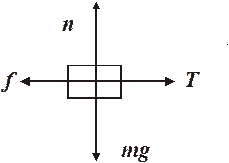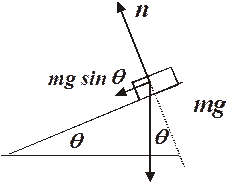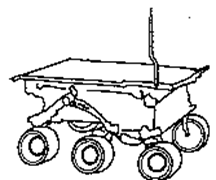Power
Power
The following text is used only for teaching, research, scholarship, educational use and informative purpose following the fair use principles.
We thank the authors of the texts and the source web site that give us the opportunity to share their knowledge
Physics
Power
AP Physics – Power
Power: Power is simply the rate at which you do work. Do work fast, you get a lot of work done, and you are very powerful. If your power output is small, however, it takes a lot of time to do the work.
In Medieval times, oxen were used to do work – plow fields, that sort of thing. Oxen could do the work in a certain amount of time and generated a certain amount of power. Horses could work faster, but, unfortunately couldn’t be hitched to a plow. The hitching equipment developed for use with oxen would tend to strangle the unfortunate horse. The way this worked was that the load from the equipment (plow) was transferred to the oxen with a wooden beam across the animal’s chest. This worked great for an ox’s anatomy, but not so good on a horse. It turns out that the wooden beam would squish a horse’s trachea, cutting off the poor critter’s wind. This tended to decrease the amount of work that got accomplished if not outright killing the poor beast. So horses were used to pull light wagons or for riding, but were not put to use by farmers to do heavy work. Then a wonderful invention came along, the horse collar. This was a semicircular device that went around the horse’s neck and distributed the load to the animal’s shoulders. The critter’s neck came out through the circular part. This meant that horses could be used to do real, heavy work like plowing fields. Horses are more powerful than oxen, so the work could be done faster, a farmer could cultivate a greater area, and grow more food. More food in less time, quite a deal, in fact it was so significant that it caused enormous social change, leading to the modern world that we know.
The equation for power is:
![]()
You end up with a unit of a joule divided by a second. Power is given its own unit, the watt. The symbol for the watt is W. A watt is a joule per second.
![]()
- It takes an engine 25 seconds to do 1 700 J of work. How much power did it develop?
This is a really simple problem; it’s just a plug n’ chug deal.

The watt is named after James Watt, a British engineer who perfected the steam engine. Watt himself developed his own unit for power, one that is still in use. This is the beloved horsepower. The symbol for horsepower is hp.
Both of these units are in common use in the United States of A. Horsepower is used for cars and larger motors. The Physics Kahuna’s Memsahib’s vacuum cleaner is advertised to be a 5.6 hp machine. Automobile engines are typically rated between 50 hp to 350 hp. Racecar engines produce more power, F1 race engines produce over a thousand horsepower.
The watt is often used for appliances that work off electricity – toasters, refrigerators, waffle irons, coffee makers, heaters, &tc.
Here is the conversion factor for horsepower and watts. ![]()
Variant Power Equations:
The equation for power is: 
This is the form of the equation given on the AP Physics Test. We will usually drop the “avg” bit and just use:
![]()
Recall that there are several different equations for work:
![]()
One finds the work using these equations and then divides by time to find the power.
One equation that can be developed is: ![]()
Of course you immediately recognized that the ![]() term is simply the velocity of the system. Thus, substituting velocity for this term, we get:
term is simply the velocity of the system. Thus, substituting velocity for this term, we get:
![]()
We know that the velocity and force must be in the same direction. If they are separated by some angle q, we get:
![]()
These are put together into another equation for the AP Physics Test:
![]()
This is the second power equation that you will be supplied when you take the AP Test.
General: Power depends on work and time. The faster the work is done, the greater the power that was developed. Work doesn't care about time, it only cares about a force acting, however slowly or quickly, to bring about the movement of an object.
A powerful engine is able to do work faster than a less powerful engine. They may well do the same amount of work, but the more powerful machine will do the work much more quickly.
- A human fly climbs up the outside of tall building to thrill the teeming hordes of earthlings below who fear he will fall to his doom. So if the 52 kg human fly takes 18 minutes to climb a 350 m building, how much power did he develop in the climb?

- A 47 kg bicycle rider develops 0.26 hp. She rides the Featherlite 250 which has a mass of 2.3 kg. Anyway, the rider must climb a 235 m hill. How much time will this take?



- A 15.5 kg block is pulled across a flat deck at a constant speed of 3.0 m/s with a rope. The rope is horizontal to the deck. The coefficient of kinetic friction is 0.330. How much power does it take to do this?

We can find the force of friction, once that is found we can then calculate the force.
Since the block is moving at a constant speed, the sum of the horizontal forces must be zero.
Also since it isn’t falling or rising, the sum of the vertical forces must be zero.
Up is positive as is going to the right.
x – direction: ![]()
y – direction: ![]()
By definition, the frictional force is: ![]()
Substitute in the value for f:

Now we can find the power it takes to do this:

- A 1250 kg Elevator carries a maximum load of 955 kg. A constant frictional force of 3850 N exists. What minimum power (in hp) for the motor is needed to lift the thing at a constant speed of 3.50 m/s?
We need to find the force needed to lift the elevator. We draw a FBD and examine the sum of the forces. They must equal zero since the elevator will move at a constant speed.
![]()
![]()

![]() the force is T, so:
the force is T, so:
![]()


Now, for real fun, let’s do an AP Test question:
1. The Sojourner rover vehicle shown in the sketch was used to explore the surface of Mars as part of the Pathfinder mission in 1997. Use the data in the tables below to answer the questions that follow.
Determine answers for tests done on earth
Sojourner Data
Mass of Sojourner vehicle: 11.5kg
Wheel diameter: 0.13 m
Stored energy available: 5.4 x l05 J
Power required for driving under average conditions: 10 W
Land speed: 6.7 x 10-3 rn/s
We will calculate the answers based on the thing being on the earth.
|
- Assume that when leaving the Pathfinder spacecraft Sojourner rolls down a ramp inclined at 20° to the horizontal. The ramp must be lightweight but strong enough to support Sojourner. Calculate the minimum normal force that must be supplied by the ramp.
- What is the net force on Sojourner as it travels across the earth’s surface at constant velocity? Justify your answer.
- Determine the maximum distance that Sojourner can travel on a horizontal earth’s surface using its stored energy.
- Suppose that 0.010% of the power for driving is expended against atmospheric drag as Sojourner travels on the surface. Calculate the magnitude of the drag force.
Solution:
1. Draw a FBD:
![]()


- Since the thing is moving at a constant velocity, the sum of the forces is zero. Therefore the net force acting on the thing is zero.
3. 
![]()
4. Suppose that 0.010% of the power for driving is expended against atmospheric drag as Sojourner travels on the surface. Calculate the magnitude of the drag force.
![]()
![]()
![]()

Source : http://teachers2.wcs.edu/high/bhs/mikek/AP%20Physics%20Course%20Notes/Work%20and%20Energy/3%20-%20%20Power.doc
Web site link: http://teachers2.wcs.edu
Author : not indicated on the source document of the above text
If you are the author of the text above and you not agree to share your knowledge for teaching, research, scholarship (for fair use as indicated in the United States copyrigh low) please send us an e-mail and we will remove your text quickly.
Power
Power
Power
This is the right place where find the answers to your questions like :
Who ? What ? When ? Where ? Why ? Which ? How ? What does Power mean ? Which is the meaning of Power?
Power physics notes
Alanpedia.com from 1998 year by year new sites and innovations
Main page - Disclaimer - Contact us
